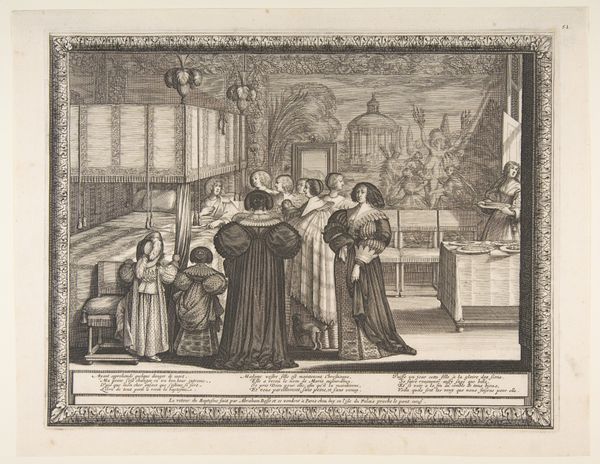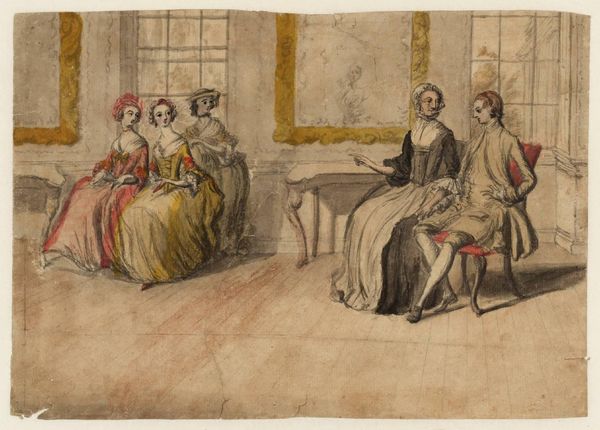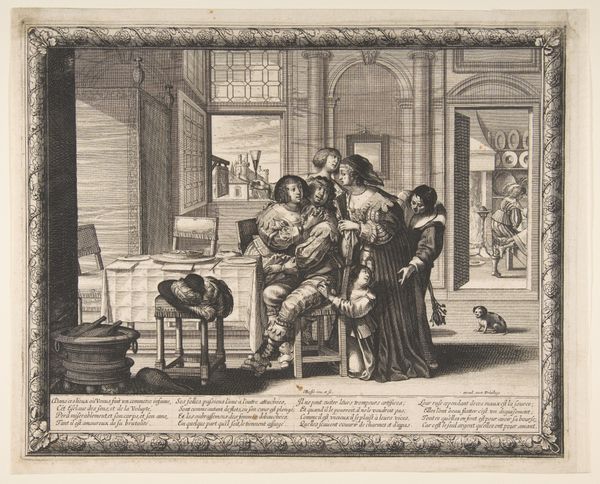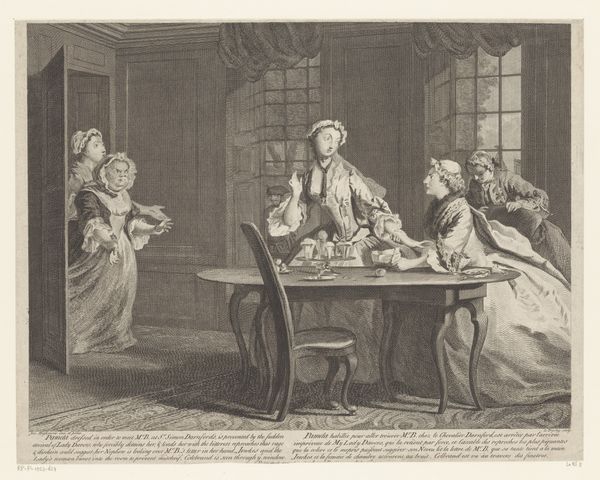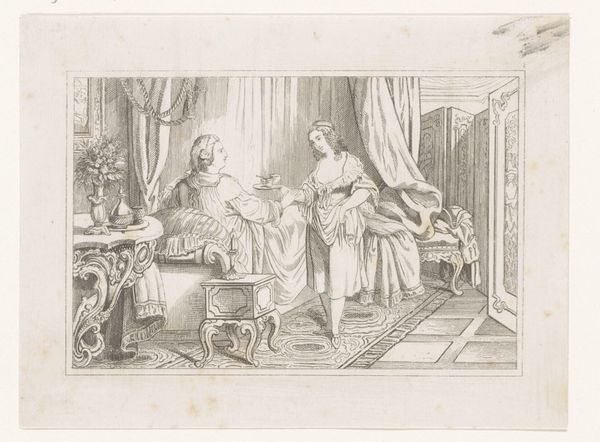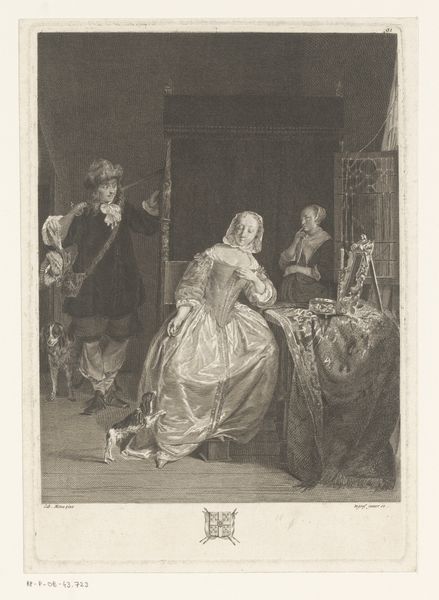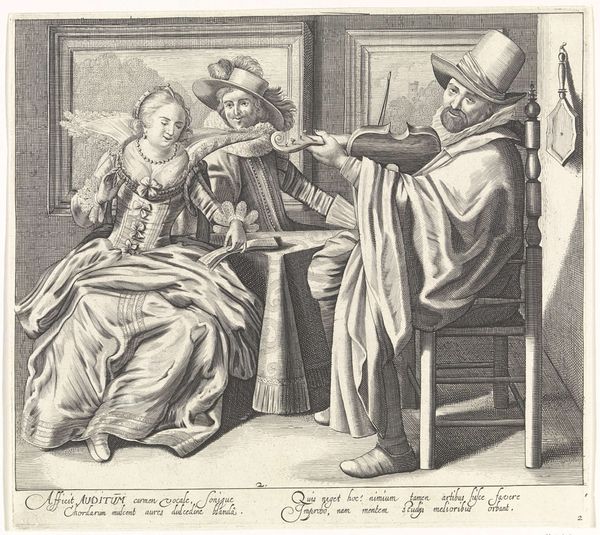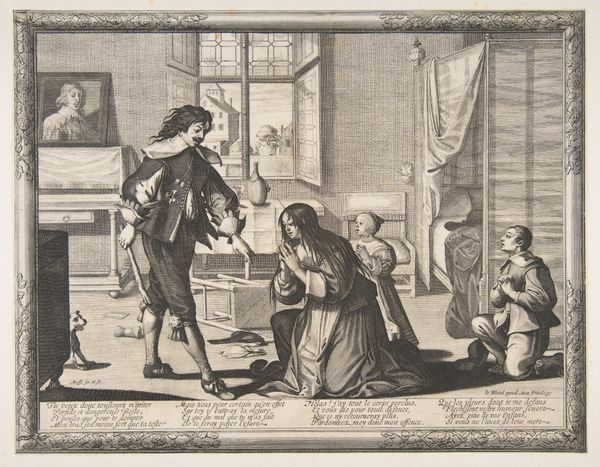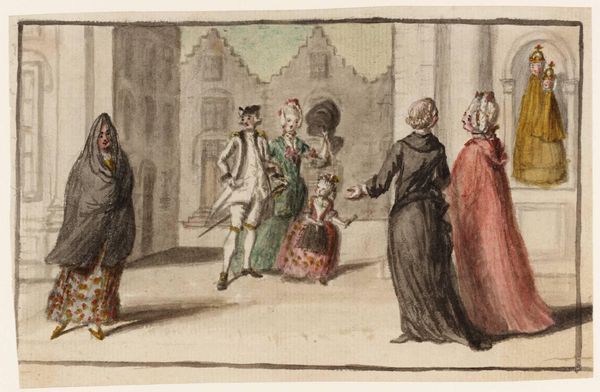
Sijbrant Schellinger en Jenneken ter Borch met twee kinderen in een interieur 1669
0:00
0:00
painting, watercolor
#
portrait
#
narrative-art
#
dutch-golden-age
#
painting
#
figuration
#
watercolor
#
coloured pencil
#
watercolour illustration
#
genre-painting
#
mixed media
#
watercolor
Dimensions: height 243 mm, width 360 mm
Copyright: Rijks Museum: Open Domain
Curator: The artwork before us is titled "Sijbrant Schellinger en Jenneken ter Borch met twee kinderen in een interieur" dating back to 1669, and held here at the Rijksmuseum. Editor: Immediately striking is the careful arrangement within the frame; the geometric shapes in the background create an interesting juxtaposition with the ornate figures at the fore. Curator: Indeed. The piece utilizes mixed media – primarily watercolour and coloured pencil. As was common then, the painting gives us a glimpse into the domestic life of a Dutch Golden Age family, showcasing the markers of their status and comfort. Editor: Look at the contrast between the woman's yellow dress and dark shawl. The colours have this vibrancy, even now. It makes you want to examine the surface closely, searching for some kind of order. Curator: From a materialist perspective, one can note that clothing and furniture acted as very visible signs of economic success. Here we have fur, fine fabrics and skilled artisanal goods – it tells us of the family’s elevated place in the societal structure. Editor: But doesn't the lighting contribute heavily? It lends a subdued richness, highlighting the textures of the fabrics and the softness of the figures’ features, drawing your eye to how light reflects differently off the various textures. Curator: Absolutely, it showcases not only artistry, but also access. Fine materials require global trade, elaborate needlework calls for specialized labor, thus revealing global networks. What may look like a personal, familial scene is actually a nexus point of multiple social and economic transactions. Editor: That tension is echoed formally too; a push and pull of shapes – curves against lines. What did such careful constructions communicate to audiences, if not wealth? Curator: Precisely. The composition guides the viewer to read affluence and stability – through a material language we can discern the mechanisms through which society validates itself. Editor: Seeing the shapes interacting and influencing our eyes – like the colour or texture, or where the details fall into place– brings all that information together. Curator: This artwork, in essence, reminds us that history resides not just in the grand narratives, but also in the quiet lives lived among objects shaped by labor and trade. Editor: Exactly. To grasp a fuller meaning, you have to explore not only context, but all aspects of its visual construction.
Comments
No comments
Be the first to comment and join the conversation on the ultimate creative platform.

